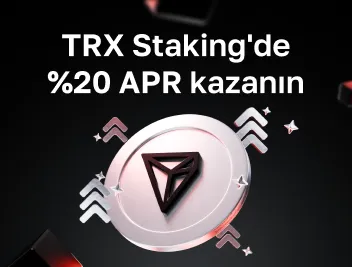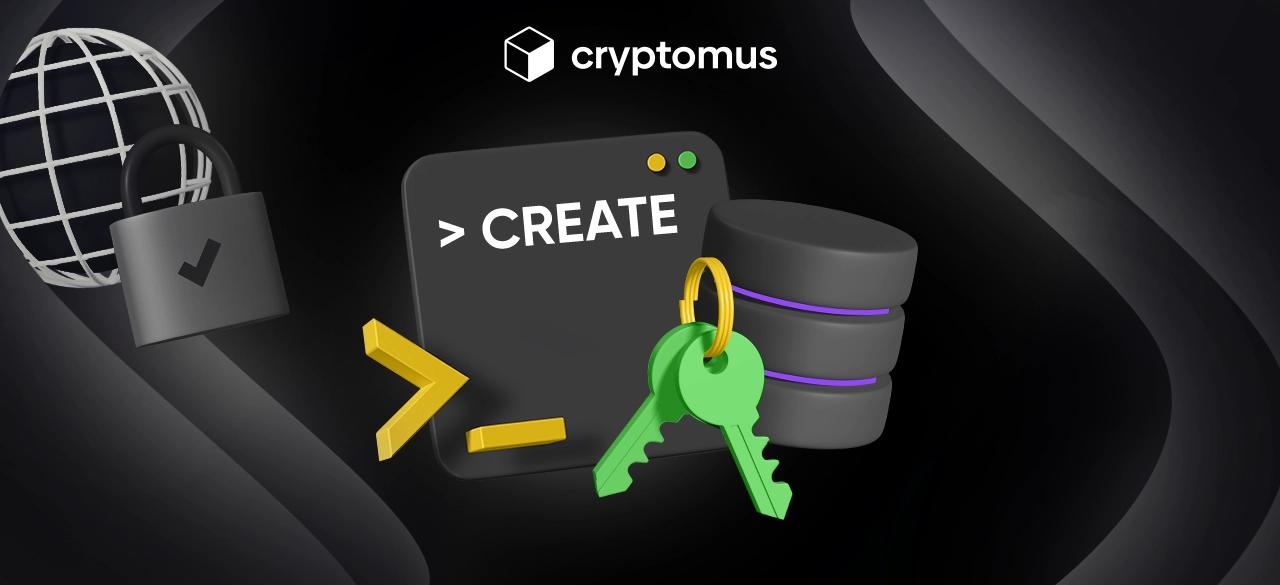
P2P Ödemelerinin Yararlarını ve Risklerini Keşfetmek
P2P ödemeleri, teknolojiyi finansal işlemlere olan günlük ihtiyaçla birleştirerek kripto para birimini kullanma şeklimizde önemli bir değişikliktir.
Dijital çözümlere giderek daha fazla bağımlı hale geldikçe, eşler arası ağ avantajlarını ve P2P yatırım risklerini anlamak her zamankinden daha önemlidir.
P2P Ödemelerinin Faydaları
Dijital işlemlerin geleneksel işlemlerden daha hızlı, daha esnek ve yenilikçi olduğuna dair hiçbir endişe yoktur. Eşler arası ödemeler gerçek bir oyun değiştiricidir. Bu platformlar, parayı algılama ve kullanma biçimimizde değerli değişiklikler yaptı ve modern rahatlık ve verimlilik ihtiyacımızı karşılayan bir dizi fayda sağladı.
P2P ödemelerini dünya çapında milyonlarca insan için tercih edilen bir seçenek haline getiren şeyin derinliklerine dalalım. Eşler arası ağ avantajlarının bir listesi vardır:
P2P Ödemelerini kullanmanın rahatlığı
P2P ödemelerinin sunduğu kolaylık benzersizdir. Bu sistem, kullanıcıların geleneksel bankacılık kanallarını atlayarak dijital platformlar aracılığıyla doğrudan başkalarına para aktarmalarını sağlar. Akıllı telefonunuzda veya bilgisayarınızda birkaç düğmeyi tıklamak kadar basittir. Bu kullanım kolaylığı, akşam yemeği faturalarını bölmekten kira ödemeye kadar her şey için P2P ödemelerini popüler hale getirdi.
P2P Ödemeleri Finansal İşlemleri Nasıl Basitleştirir?
P2P ödemeleri, finansal işlemleri çeşitli şekillerde basitleştirmiştir. Nakit veya fiziksel varlık ihtiyacını hafifleterek anında transferler sağlarlar. Bu yakınlık özellikle küçük, acil işlemler için faydalıdır. Ek olarak, P2P platformları genellikle bankacılık sistemleriyle sorunsuz bir şekilde entegre olur ve bu da onları kullanıcıların mevcut finansal yönetim araçlarının uygun bir uzantısı haline getirir.
Geliştirilmiş Esneklik
P2P ödeme platformları, finansal işlemlerin yönetiminde benzeri görülmemiş bir esneklik sağlar. Genellikle kullanıcıların birden fazla banka hesabını veya kartını bağlamasına izin verir ve hatta bazıları para birimleri arası işlemleri destekler. Bu esneklik, kişisel transferlerden ticari işlemlere, fatura ödemelerine ve hatta hayırsever bağışlara kadar bu platformların kullanılabileceği amaçlara kadar uzanır.
Kolaylaştırılmış Para Yönetimi
Birçokları için P2P ödemeleri daha iyi para yönetimi için bir araç haline geldi. Bu platformlar genellikle kullanıcıların harcamalarını izlemelerine, ödeme hatırlatıcıları ayarlamalarına ve hatta faturaları birden çok kişi arasında bölmelerine olanak tanıyan özelliklerle birlikte gelir. Parlak örnek, ücretsiz otomatik para çekme ve dönüştürme özelliğine sahip çok işlevli bir cüzdan sağlayan bir P2P değişim Kriptomusudur.
Sosyal Yönü
P2P ödemelerinin benzersiz bir sosyal boyutu vardır - kullanıcıların yaşamlarının sosyal dokusuna sorunsuz bir şekilde entegre olurlar. Kitle fonlaması, grup hediyeleri veya topluluk kaynakları havuzu için kullanılan P2P platformlarını görmek yaygındır.
P2P Ödemeleriyle İlişkili Riskler
P2P kullanımındaki tereddütlerin tüm nedenleri, eşler arası borç verme, dolandırıcılık, zayıf güvenlik vb. Risklerle bağlantılıdır. Ayrıca, işlemleri güvenli bir şekilde göndermek için, çok çeşitli güvenlik araçları sunan Cryptomus gibi oldukça saygın ve korumalı bir P2P değişimi bulmalısınız: beyaz listeler, KYC vb.
Eşler arası ana risklerin listesine bakalım.
Dolandırıcılık ve Dolandırıcılık Riski
İlk göze çarpan P2P riski, dolandırıcılık ve dolandırıcılık potansiyelidir. Geleneksel banka işlemlerinin aksine, P2P ödemeleri genellikle anlık ve geri döndürülemez. Bu yakınlık iki ucu keskin bir kılıç olabilir - verimlilik açısından harikadır, ancak dolandırıcıların para almasını ve hızla kaybolmasını da kolaylaştırır. Yaygın dolandırıcılık, dolandırıcıların kullanıcıları hassas bilgileri ifşa etmeleri için kandırdığı kimlik avı girişimlerini veya sahtekarlardan gelen sahte para taleplerini içerir.
Veri İhlali Endişeleri
Her dijital platformda olduğu gibi, her zaman veri ihlali riski vardır. P2P platformları önemli miktarda kişisel ve finansal bilgi depolayarak onları siber suçlular için cazip hedefler haline getirir. Bir ihlal, kullanıcılar için geniş kapsamlı sonuçlar doğurabilecek banka bilgileri de dahil olmak üzere tehlikeye atılmış kişisel bilgilere yol açabilir.
İşlem Hataları
P2P ödemeleriyle ilişkili diğer bir risk, kullanıcılar tarafından yapılan hataların potansiyelidir. Yanlış telefon numarasını veya e-posta adresini girerseniz, geri dönüşü olmayan bir şekilde farklı bir kişiye para gönderilmesine neden olabilir. Bu işlemlerin doğası budur: değiştirilemez ve gönderene geri döndürülemez. Bu nedenle, bu tür hatalar, esas olarak istenmeyen alıcının tutarı geri ödeyememesi veya geri ödemek istememesi durumunda finansal bir kayba yol açar.
P2P Kredisi: Güvenli mi
P2P kredisinin risklerinin ne olduğunun farkında olmak gerçekten hayati önem taşıyor. Değişken koşullarda kripto ödünç almanın ateşle oynamak gibi olduğunu not ederseniz yardımcı olur. Piyasa düşerse, yalnızca tasarruflarınızı değil, aynı zamanda platformdan ödünç alınan tutarı da kaybedebilirsiniz, bu da fazla ödeme gerektirir. Bu nedenle, kendinize P2P kredisinin güvenli olup olmadığını sorduysanız, P2P kredisindeki çeşitli riskler nedeniyle cevap hayırdır.
Yasal Koruma Eksikliği
Birçok bölgede, ana P2P güvenlik risklerinden biri, geleneksel bankacılık kurumları olarak yasal bir yasal korumadır. Örneğin, bir dolandırıcıya ödeme yetkisi verirseniz, ters ibrazların standart bir prosedür olduğu kredi kartı dolandırıcılığının aksine, platform üzerinden geri ödeme almak zor olabilir.
Düzenleyici Riskler
P2P ödemelerini çevreleyen düzenleyici ortam hala gelişmektedir. Düzenlemelerdeki değişiklikler, bu platformların çalışma şeklini etkileyerek kullanıcıların fonlarına erişimini potansiyel olarak etkileyebilir veya kullanım koşullarını önemli şekillerde değiştirebilir.
Güvenli ve Etkili P2P Ödemeleri için ipuçları
P2P ödemelerinin rahatlığı inkar edilemez olsa da, bu manzarada gezinmek farkındalık, güvenlik, önlem ve akıllı uygulamaların bir karışımını gerektirir. P2P ödeme deneyiminizi nasıl hem güvenli hem de etkili hale getirebileceğinizi keşfedelim.
1.İşlemlerde Güvenliğe Öncelik Vermek: Güvenli P2P ödemelerinin temel taşı sağlam güvenliktir. Bu, sağlam güvenlik protokolleriyle tanınan saygın bir P2P platformu seçmekle başlar. Seçilebilecek en iyi platform, uçtan uca şifreleme, sahteciliğe karşı koruma ve iki faktörlü kimlik doğrulama gibi güvenli oturum açma yöntemleri sunan hizmettir. P2P exchange Cryptomus böyle sağlam bir koruma içerir. Finansal verilerinizin güvenliğinin en zayıf halka kadar güçlü olduğunu hatırlamak çok önemlidir, bu nedenle koruyucu önlemlerin ayrıntılarına dikkat edin.
2.Kişisel Bilgilerin Gizli Tutulması: Güvenliği sağlamanın en basit ama en etkili yollarından biri, kişisel bilgilerinize karşı dikkatli olmaktır. P2P platformlarında paylaştıklarınıza dikkat edin. Herkese açık veya kolayca erişilebilen forumlarda toplam kart numaralarınız veya banka hesap bilgileriniz gibi hassas bilgileri paylaşmaktan kaçının ve bu tür bilgiler için istenmeyen taleplere karşı dikkatli olun.
3.İşlemlerin Düzenli Olarak İzlenmesi: İşlem geçmişinize göz kulak olmak sadece iyi bir finansal hijyen değildir; Bu çok önemli bir güvenlik uygulamasıdır. Yetkisiz veya şüpheli etkinlikleri tespit etmek için P2P işlemlerinizi düzenli olarak gözden geçirin. Birçok P2P platformu, her işlem için bildirimler sunar ve bu, tüm hesap etkinliklerinden gerçek zamanlı olarak haberdar olmak için değerli bir araç olabilir.
4.İşlemler için Güvenli Ağları Kullanma: P2P ödemeleri yaparken her zaman güvenli ve özel bir internet bağlantısı kullandığınızdan emin olun. Halka açık Wi-Fi ağları, bilgisayar korsanlarının finansal verilerinizi engelleyebileceği ortadaki adam saldırıları gibi siber tehditler için üreme alanı olabilir. İşlem yaparken güvenli, özel bir Wi-Fi ağı veya güvenilir bir VPN hizmeti kullanmak bu riskleri önemli ölçüde azaltabilir.
5.Riskleri Anlama ve Yönetme: Her finansal işlem doğal risklerle birlikte gelir ve P2P ödemeleri istisna değildir. Para talebi dolandırıcılığı veya kimlik avı girişimleri gibi P2P ödemeleriyle ilişkili yaygın dolandırıcılık ve dolandırıcılıkların farkında olun. Bu dolandırıcılıkların anlatıcı belirtileri konusunda kendinizi eğitin ve en son güvenlik tehditlerinden haberdar olun.
6.Takdir Yetkisinin ve Doğrulamanın Rolü: Para göndermeden önce daima alıcının bilgilerini doğrulayın. P2P ödemelerinde yaygın bir hata, yanlış ayrıntılar nedeniyle yanlış kişiye para göndermektir. Hızlı bir çift kontrol, sizi her zaman geri alınamayan istenmeyen işlemlerden kurtarabilir.
Cryptomus, P2P platformunda işlem güvenliğine öncelik vererek her kullanıcının işlem yaparken kimliğini doğrulamasını sağlar. Bu nedenle, KYS, platformdaki yetkisiz kullanıcıların varlığını önemli ölçüde azaltan bir P2P tel korumasıdır.
P2P Ödemelerinin Geleceği: Trendler ve Yenilikler
P2P ödemelerinin geleceği teknolojik atılımlara, kripto para birimine sosyal adaptasyona ve piyasa dinamiklerine bağlıdır. Ancak blockchain tabanlı P2P ödeme sistemlerinin güvenli ve özel olduğunu güvenle söyleyebiliriz.
Kullanıcılar P2P ödemelerinin gelecekteki potansiyelini gözlemleyebilir. Dolandırıcılık tespitleri ve dolandırıcılık önleme, yapay zeka ve makine öğrenimi ile etkin bir şekilde desteklenir. Ayrıca parmak izi ve yüz tanıma gibi biyometrik güvenlik özelliklerinin P2P ödeme platformlarını daha da güvence altına alması bekleniyor.
Sonuç
Cryptocurrency, finansal işlem ortamını dönüştürerek P2P avantajlarının ve risklerinin bir karışımını sağladı. Bilgilendirilerek, dikkatli davranarak ve güvenli platformlar kullanarak kullanıcılar, risklerini en aza indirirken P2P ödemelerinin avantajlarından yararlanabilirler.
Geleceğe baktığımızda, teknolojideki yenilikler P2P ödemelerini daha da entegre, güvenli ve kullanıcı dostu hale getirmeyi ve gelişen dijital ekonomideki rollerini sağlamlaştırmayı vaat ediyor.
Makaleyi değerlendirin








yorumlar
0
Yorum yazmak için giriş yapmış olmalısınız